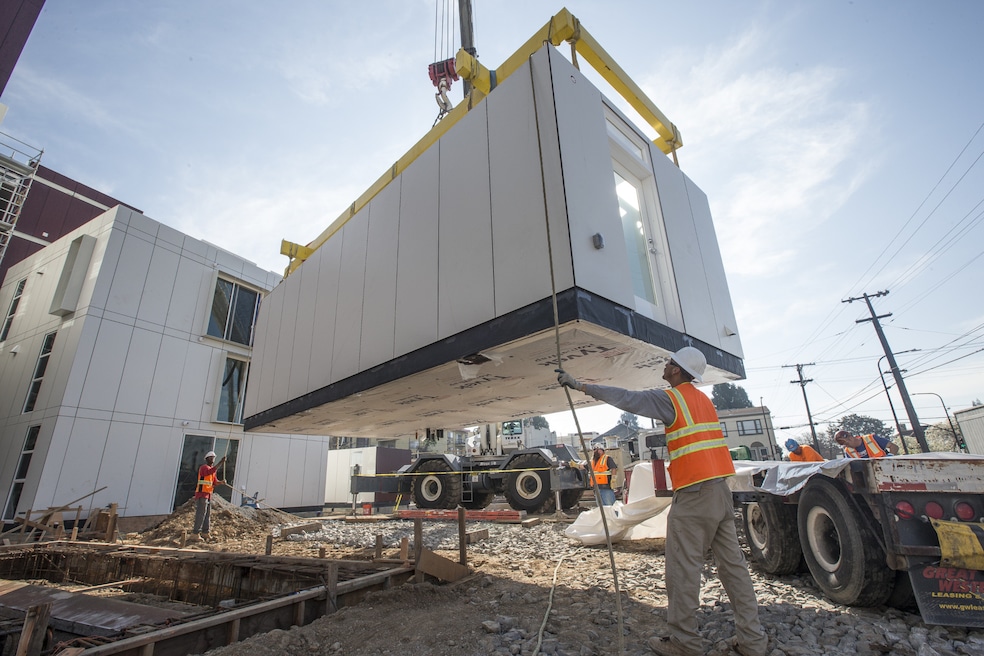After meeting with real estate experts on Capitol Hill last week, policymakers are eyeing four solutions to expand homeownership and boost the nation's housing supply: encouraging 3D printing, increasing the construction workforce, producing more modular homes and loosening zoning regulations.
Four real estate experts met with the U.S. House Committee on Financial Services Wednesday to discuss housing innovation: Bill Boor, chair of the Manufactured Housing Institute; Eric Schaefer, chief business development officer for Fading West, a Buena Vista, Colorado-based manufacturer of factory-made homes; Andrew McCoy, director of the Virginia Center for Housing Research; and Colten Lewis Fleu, senior attorney with Mountain State Justice, a West Virginia-based nonprofit that provides legal services to low-income individuals facing predatory mortgage lenders.
Mike Flood, a Republican representing Nebraska, led the meeting.
"While we don’t have an immediate announcement, Chairman Flood’s team is working through policy proposals related to this hearing and is excited to share next steps in the future," Taylor Gage, a spokesperson for Flood, said via email.
Homeownership continues to be a distant dream for many aspiring first-time buyers and professionals struggling to make ends meet. Affordability and tight supply remain the most limiting factors.
“This is an issue that could get bipartisan support, but in doing that, we must recognize the experiences we’ve had,” said Maxine Waters, Democrat of California. “We’ve got to get rid of homelessness and unhoused people expect us to come up with answers. Let’s not be shy about it. Let’s get together and say we want the money, we want the assistance, we want the care.”
The four strategies proposed focus on how homes are constructed, who does the work, what kind of houses are built, and how policymakers can ease the process:
Encourage more 3D printing
Real estate developers and tech companies are collaborating to build homes using 3D printing on any site. The 3D printing process establishes the frame and foundation of a residence using a machine. The technology reduces the time and labor costs needed to build homes. Cost savings range from 10% to 35% for real estate developers, reductions they can pass on to consumers, based on research Texas A&M University published last May.
Bolster the construction workforce
The panel said the industry needs more labor to meet the demand. The construction industry has 8.3 million workers, and 3.4 million are on residential projects. The industry needs another 723,000 workers per year to meet the demand for residential projects, according to an October 2024 report by the National Association of Home Builders.
“How do we modernize the workforce, so they know how to work with machines?” McCoy said. That’s something we’ve seen in manufacturing with the attempt to understand how we modernize our workforce process.”
Build more modular housing
Factory-made residences can boost the housing supply, but one panelist urged politicians to press for modular construction, not manufactured residences. Modular homes are built in sections in a factory, delivered to a property and assembled on-site. These may appreciate. Manufactured residences — think automobile and trailer residences — are built in a factory, delivered and placed on a foundation.
"Manufactured homes, also called 'mobile homes,' have finite lifespans," Fleu said. "Manufactured homes depreciate like cars. Manufactured homes are a vital source of housing, but they are not a wealth-building tool. It’s a factor we urge you to keep in mind as you look to expand access to this important housing."
Loosen zoning regulations
Some cities face the challenge of limited land, including Miami, Rep. María Elvira Salazar, a Republican of Florida, said. While manufactured homes and 3D printing may boost inventory in communities with plenty of land, some cities have to work with tiny plots and restrictions.
Developers, Salazar said, then complain about the cost of land and the challenge of penciling out attainable housing for the masses.
“The land cost issue is a given. This whole problem is a supply-side problem. This is not about throwing money at the cost of homes; it’s about supply. If we can get more housing units on that expensive land, then we win. The best thing to think about in urban environments is to think about duplexes and other solutions and have more units.”
Zoning changes could allow for more density and housing opportunities, including incentives for accessory dwelling units or the addition of studio-like spaces built in backyards or the conversion of garages into living spaces. Several communities across the country have approved ordinances allowing the construction of ADUs over the past 15 years, including Miami-Dade County in 2022 and Portland, Oregon, in 2010.
A boost in overall housing supply, the panelists said, would also help the homeless population. A February 2024 report by the U.S. Census Bureau found 327,000 civilians lived in emergency or transitional shelters from 2018 to 2022, up from 267,000 people from 2013 to 2017.

